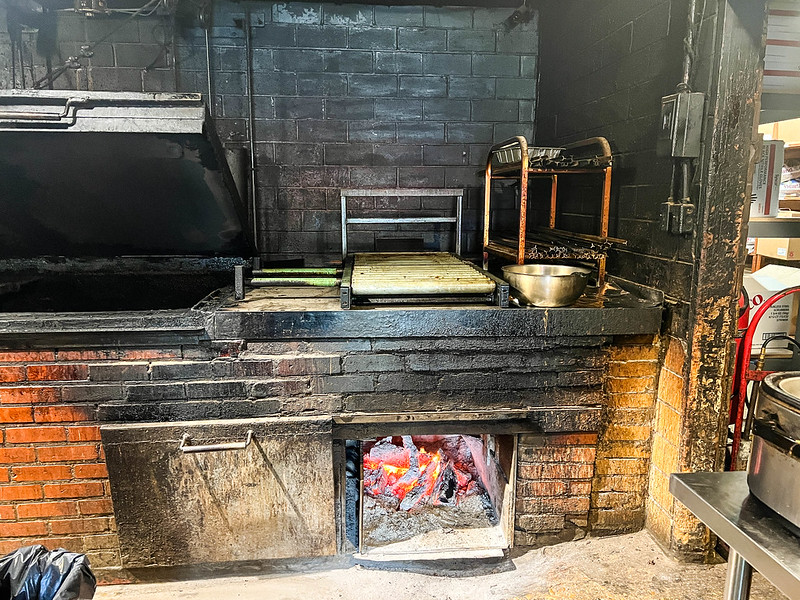Texas barbecue has many unique characteristics, mainly related to how it is cooked — low and slow — and how it tastes (salty and smoky).
Central Texas-style barbecue is further characterized by the method used to cook the meat low and slow. Specifically, it uses a technique in which the heat source is separated (“offset”) from the chamber in which the meat is cooked.
This process is known as “indirect” cooking or smoking, in which the heat and smoke from the fire flow over the meat to cook it, rather than being directly under it. This technique gave rise to the traditional cooking appliance of Central Texas-style barbecue: the offset brick or steel smoker.
When, why and where did the indirect heat method become standard in Central Texas? Unfortunately, there are no definitive answers. But there are clues, starting with the immigration of German, Czech and Polish settlers to the area in the mid-1800s.
Central European smokehouses starting as early as the Middle Ages separated the fire chamber from the cooking chamber for safety reasons, as well as to better control the flow of heat and smoke.
The big difference at that time, though, was that the smokehouse was used to preserve meat, not to cook it.
Food preservation is one of the most important factors in human evolution and still influences flavors and techniques in cooking — especially barbecue — today.
Specifically, the ability to preserve food for later consumption (for instance, during times of drought or winter) greatly impacted the development of human civilization.
Before mechanical refrigeration, humans used other food preservation techniques, primarily fermentation and curing. The purpose of food preservation is to make it safe to consume, palatable to eat and pleasing in appearance.
The enemy of food preservation are pathogenic microorganisms. These can cause food poisoning, make food taste rancid and cause foods like meat to look gray and unappealing.
These microorganisms thrive in moist environments with moderate temperatures. So, one way to successfully preserve food is to manipulate moisture and temperature.
Curing food is a great way to do this. This process makes food inhospitable to those bad microorganisms. There are three basic curing techniques: drying, salting and smoking.
For example, from a Western historical perspective, ancient Egyptians were famous for dried fruits, Romans perfected the process of salting meats and central Europeans refined a technique known as “cold smoking” to preserve food. In this case, salted meat is exposed to low temperature for long periods of time to further enhance safety and flavor.
This smoking process checked all the boxes for successful food preservation: The low heat dried out the meat, while the smoke introduced compounds that both killed microbes and added flavor. The process also retained the red or pink color of the meat, thus making it visually appealing.
Though there is no definitive historical connection between the cold-smoking techniques of central Europe in the 1500s and the German meat markets of Central Texas in the mid-1800s, there are many correlations between those traditional food preservation techniques and how meat eventually came to be cooked low and slow as barbecue in historic meat markets around Lockhart, Fredericksburg and New Braunfels in the early 1900s.
Today, some of the oldest offset brick pits are located at Smitty’s Market in Lockhart. Here, the fire sits in a pit on the side of the rectangular brick cooking chamber that was reportedly built in the 1920s. It’s one of the earliest examples of Central Texas-style barbecue still in operation.


